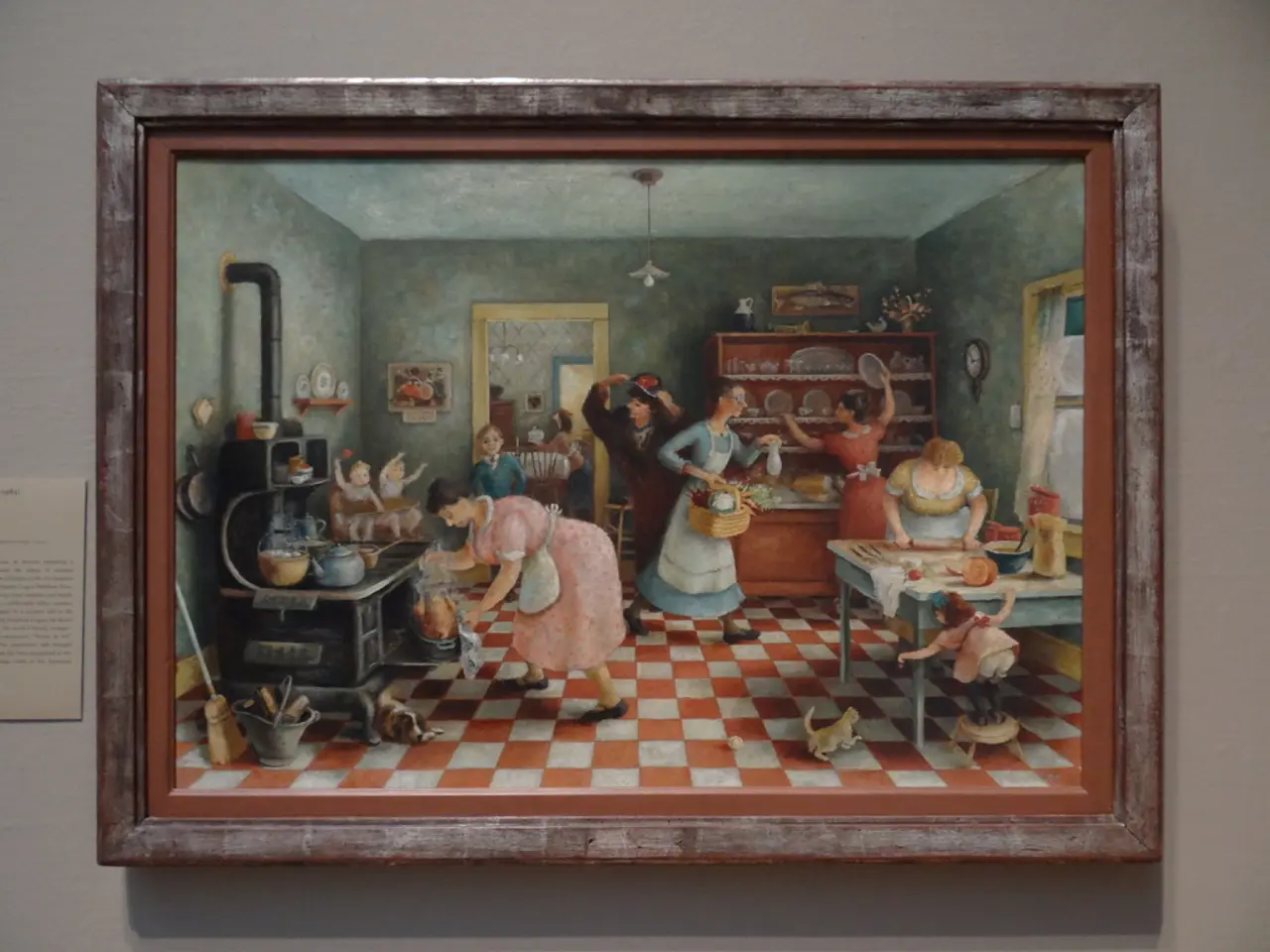Discrimination Based on Age and Gender Targets Women Beyond 50: A Strong Battle for Respect and Acknowledgement
In today's dynamic work environment, women over 50 face unique challenges due to gendered ageism. This insidious bias can lead to financial losses and diminished opportunities for older women.
A recent study reveals that poverty rates climb significantly among older women, with those aged 80 and above experiencing a 49% increase in poverty rates compared to their younger counterparts aged 65-69. This alarming trend underscores the need for effective strategies to combat gendered ageism in the workplace.
One such strategy is challenging stereotypes and building confidence. Many older working women face negative associations linking aging and menopause with declining ability and lower productivity, which can affect self-confidence and how others perceive their work performance. Women can actively counteract these assumptions by emphasizing their continued capability and challenging discriminatory attitudes.
Another strategy involves highlighting skills and experience. Women over 50 often bring strategic, organizational, and emotional skills developed through decades of experience, including caregiving and managing complex life roles. Demonstrating these transferable competencies can help combat ageist hiring practices and workplace biases.
Seeking supportive communities and networks also plays a crucial role. Returning women benefit from programs and communities that empower midlife women with confidence and tools to restart careers, helping to overcome hiring biases and workplace hostility.
Advocating for workplace awareness and policy change is equally important. Since menopause and aging are poorly understood and often ignored in workplace policies, women can advocate for better workplace education, flexible policies, and accommodations that acknowledge the diverse and heterogeneous experiences of aging, rather than assuming decline for all.
Addressing physical appearance biases is another key aspect. Awareness of how physical signs of aging influence bias is important; some women address this by reshaping workplace norms or using their experience to shift perceptions about visibility and productivity in later career stages.
Martha Stewart and Jaleh Bisharat are prime examples of women who have successfully navigated the challenges of gendered ageism. Stewart built her media empire in her late 40s and 50s after leaving her stockbroker career, while Bisharat launched NakedPoppy, a clean beauty e-tailer, in her 50s.
However, the economic impact of gendered ageism is staggering. If not addressed, age discrimination against women over 50 could lead to a $3.9 trillion economic loss by 2050. Sectors like leisure and hospitality could lose $468 billion, and the healthcare sector could lose $674 billion in spending due to discriminatory practices.
Divorced and unmarried women feel the financial pressure of gendered ageism the most, with poverty rates hitting 15.8% and 21.5% respectively. The U.S. Supreme Court has strengthened protections for older workers, making it easier for workers over 40 to challenge age discrimination.
For women over 50 who are considering a career change, exploring opportunities in consulting, education and training, healthcare administration, and entrepreneurship could provide viable solutions.
In conclusion, combating gendered ageism requires a combination of personal empowerment, skill validation, supportive networks, and systemic workplace change that recognizes and values older women’s contributions beyond stereotypes linked to age and menopause.
- Women over 50 often bring strategic, organizational, and emotional skills developed through decades of experience, which can help combat ageist hiring practices and workplace biases.
- Mental health and self-confidence are essential for older working women facing negative associations linking aging and menopause with declining ability and lower productivity.
- Seeking supportive communities and networks, such as programs for returning women, can empower midlife women with confidence and tools to restart careers, helping to overcome hiring biases and workplace hostility.
- Demonstrating one's continuous capability and challenging discriminatory attitudes can counteract assumptions that older workers are less productive or have lower mental capacity.
- The business world can foster a culture of personal growth, goal-setting, education-and-self-development, and leadership that values diversity-and-inclusion, creating opportunities for women over 50 in careers and careers changes.
- In some cases, redefining workplace norms can effectively address physical appearance biases that influence stereotypes about older workers.
- Effective strategies to combat gendered ageism include advocating for workplace awareness and policy change, such as better workplace education, flexible policies, and accommodations that acknowledge the diverse and heterogeneous experiences of aging.
- Addressing gendered ageism is critical for the health and wellness of older women, as poverty rates increase significantly among older women, especially those aged 80 and above, and if not addressed, age discrimination against women over 50 could lead to a $3.9 trillion economic loss by 2050.




